On May 6, 1998, the newly returned Steve Jobs launched the first major consumer product of his second era at Apple. The original iMac was an instant success which changed the trajectory of Apple forever.
"Today, I'm incredibly pleased to introduce iMac, our consumer product," Jobs said on stage at Macworld that day in 1998. "iMac comes from the marriage of the excitement of the Internet with the simplicity of Macintosh."
"Even though this is a full-blooded Macintosh," he continued, "we are targeting this for the #1 use consumers tell us they want a computer for, which is to get on the Internet, simply and fast." Jobs went on to tout the product, which was released right before the start of the following school year, to the education market.
"We think iMac's gonna be a really big deal"
In the presentation, Jobs compared the iMac to the other computer products on the market at the time, which he derided as slow, with "crummy displays," and a lack of networking. "And," he said, "these things are ug-ly." Referring to the iMac, Jobs went on to state that, "the back of this thing looks better than the front of the other guys'."
Jobs even brought out Phil Schiller for a "showdown" between the iMac and the "hot new Compaq Presario 4540," which the Apple product won decisively.
Selling the iMac
The connectivity, ease of use, and look at the product were the subject of a series of TV commercials for the product, starring actor Jeff Goldblum:
The first iMac was priced at $1,299. It sported a G3 233-MHz processor, a 15-inch display and — perhaps most significantly — a colorful, curvy, translucent, all-in-one look that was hugely unconventional at the time. It was the first major project for Jony Ive, after he became Senior Vice President of Industrial Design in 1997.
"This one is incredibly sweet. This $1,299 product is faster than the fastest Pentium II you can buy. The market's never had a consumer computer this powerful and cool-looking," Jobs said in an interview the week of the launch with Lou Dobbs of the financial news network CNNFN. "We have been working hard on fashion, which is very important in the consumer market."
That sales job worked. The iMac was the best-selling computer of the 1998 holiday season.
Jobs also said in that Dobbs interview that, "Apple will be working on strengthening its brand name," and compared Apple to Nike, Disney and Sony. And it appears to have worked: In 2017, Interbrand named Apple the year's most valuable brand, for the fifth year in a row.
Moving forward
The iMac design changed various times in the ensuing years. In 1999, Apple began offering the iMac in different colors. The G4 arrived in 2002, with a unique dome design, with the G3 discontinued that year.
The G5 followed in 2004 with yet another form factor — a single slab with a chin.
The next big change to the line came with the arrival of the first Intel-based iMacs in 2006 that retained the form of the iMac G5. The first aluminum iMacs hit the market in 2007.
To this day, the name "iMac" is used by Apple for its thin, unibody desktop computers. Later innovations in the line have included the 5k iMac, which debuted in 2014, and the iMac Pro, which arrived in 2017.
Both of those stuck chiefly to the 2012 model's chassis, the very familiar slim if slightly bulbous screen, with the chin for the Apple logo. That design didn't change until 2021 and the introduction of the first Apple Silicon iMac.
The M1 24-inch iMac
At first glance, even the M1 iMac was instantly recognizable for how it retained much of its predecessors' design. There's the slim display, for instance, there's the chin, and there's the distinctive single, broad foot.
Except the chin on the 24-inch iMac lacks the Apple logo, and the slim display lacks the older model's bulbous or bowed-out back. It is straight-edged all round, with subtly narrower bezels, and it looks great.
It just doesn't look gigantically different.
But as with the very first iMac, the 2021 24-inch model comes in many colors.
At the movies
The keynote at which the iMac was introduced was dramatized in the 2015 movie "Steve Jobs," written by Aaron Sorkin, directed by Danny Boyle, and adapted from Walter Isaacson's authorized biography of Jobs.
However, that scene, like most of that film, took a significant amount of dramatic license. Jobs did not reconcile with his daughter Lisa on the day of the iMac launch, nor did he get into a shouting match that day with Steve Wozniak, nor was Jobs a "multi-billionaire" as of 1998.
The Significance of the iMac
The iMac was, in many ways, the logical evolution of the original compact Macintosh that arrived in 1984. While somewhat radical in its design, the iMac represented something of a step forward design-wise.
In between, Apple had tried quite a few all-in-one Mac computers during Jobs' years away, including the 500 Series Performa line, and the ill-fated Macintosh TV. But the company wouldn't put it all together until the arrival of the iMac.
The iMac's introduction is an important moment in Apple history. It came a year after Jobs returned to Apple following the company's purchase of his company NeXT; at the time of the keynote he was still interim CEO. The computer's success helped reverse of a decade of struggles for the company, leading into the the company's huge run of growth after the turn of the millennium.
It also helped set a template for a long run of products, that caught the eye with beautiful design. Apple touted that introductory event as "Back on Track," and it certainly was, even though it would take several years for Apple to return to significant profitability.
 Stephen Silver
Stephen Silver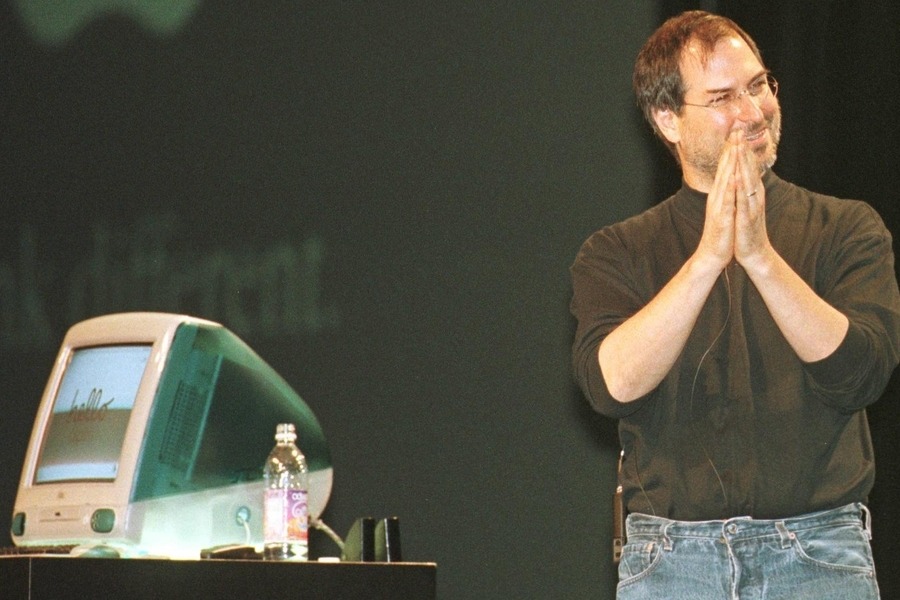
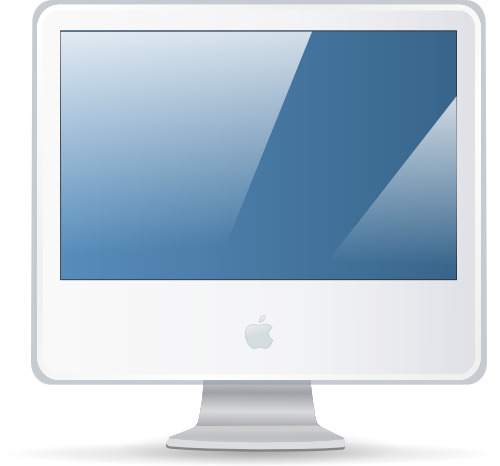



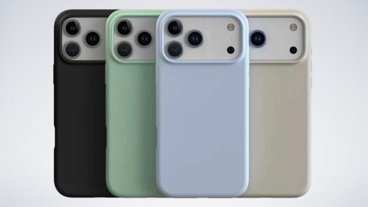




-m.jpg)






 Chip Loder
Chip Loder
 Marko Zivkovic
Marko Zivkovic
 Malcolm Owen
Malcolm Owen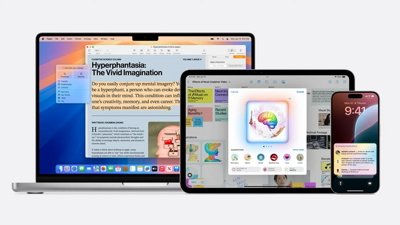

 William Gallagher
William Gallagher
 Christine McKee
Christine McKee
 Andrew O'Hara
Andrew O'Hara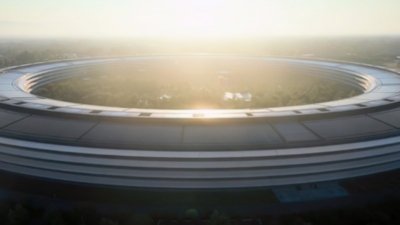
 Andrew Orr
Andrew Orr




-m.jpg)




41 Comments
An incredible product. I started using them at the art academy and back then they were pretty horrible for professional use (the puck mouse, the keyboard, the overall speed) but it was clear how awesome they were for consumer use and how redefining ‘home computer’ lead to a much more attractive, easier product.
I started using iMacs professionally when they became ‘aluminum’. It changed my perception of what a professional machine needed to be. Instead of the fastest graphics card, the easiest one to setup and the most elegant one to look at. Longer rendering times weren’t a problem if the screen was beautiful to look at and the system almost fail proof, needing no maintenance. In contrast to the clunky PC’s that had to deal with hours and hours of off-time and configuration. MacOS was truly the ‘brains’ of the beautiful iMac ‘body’. A walled garden with just enough balance between customization and protection for the end user.
My company always heavily invested in iMacs, today having over 80 employees of which many use iMacs. Unfortunately, raw speed on the client (not networked) has become much important, especially VR, and we have slowly replaced many of the iMacs with ugly PC’s. Mac Pros where never an attractive consideration.
The iMac is due for a redesign, having had the same design since 2007 (with some evolutionary changes). Apple is playing it too safe and other brands have proven to be really good at industrial design as well (but never had the same reaction as Apple). I would like to see a greener iMac, where the monitor is still part of the same computer design-wise, but can be detached from the computer (and therefore replaced). No more chin but bevel-less. Something fresh and new.
The iMac was as this article states truly revolutionary, and I hope the product will evolve for the years to come!
This was my very first Mac. I was begging my parents for a new Mac and back then, Macs were expensive (go figure!)...like still $1,500-2,000+ so they weren't exactly affordable, especially considering that you needed to purchase a display as well. When this iMac came out I finally convinced my dad to get one since it was $1299 for the entire thing. They were awesome looking computers. Remember, back then everything was beige with a hint of beige. It was just so different looking. I can't say how much faster it was versus other computers because I didn't have any other computer. I don't remember it being slow though. We purchased it from MacWarehouse and they had a deal where it came with 32MB of RAM for free so it had a total of 64MB of RAM. We got the Imation SuperDisk Drive so I could use either a regular floppy or the LS120 SuperDisk that held I think it was 120MB which was pretty cool. I had an Apple StyleWriter II printer given to me by a friend which needed an adapter to convert it from the old Serial interface to USB (Yes, we had dongles back then too!).
My dad liked it so much that he wanted his own Mac so he bought another iMac which was the ones that had colors so I took the new iMac (Blueberry) and he took the old Bondi Blue one. I had this iMac for quite some time, used it with the Mac OS X Public Beta, then later Mac OS X (10.0-10.2) until I got a 17" 1GHz iMac G4 as a College graduation present. I used that for a couple of years until I purchased my own 1.8GHz 17" iMac G5 (original model) after I got my first job and had that until I got I think it was a PowerMac G5. I didn't trust the original iMac G5 as it always got extremely hot, even when doing the most basic tasks so I didn't keep that very long.
I've had a few other Macs since then but it was the original Bondi Blue iMac that started it all with the Mac! I still love the Mac to this day and wouldn't consider switching to anything else. I'm the Administrator of Apple Services at the school I work in and provide IT support for both Macs and Windows PC's, along with iOS devices. I was the one who started it all in the district I work in for Apple products in 2009. We were strictly a Windows shop and then we purchased some white MacBook's and an iMac lab and students loved them! So, we just kept them updated through the years with new purchases. Its nice and not as expensive as some think because when you're ready to upgrade, you can turn them back into Apple for a credit on your Apple account and that comes off the cost any new purchases. Its only the initial investment that is expensive. They seem to last forever too. Were STILL using those original 2009 white MacBook's as student spares that they can sign out and our oldest Mac lab are 2011 iMacs and they're still going strong. We've had very little issues with any of them with I think it's maybe 5 that needed to be sent back to Apple for repair and one iMac had a hard drive failure (I order all Macs today with flash storage).
I do wish Apple would redesign the iMac. Like
The iMac was not what consumers were asking for, since we know Steve never consulted with consumers to figure out what consumers wanted. Steve was just smart enough to just know.